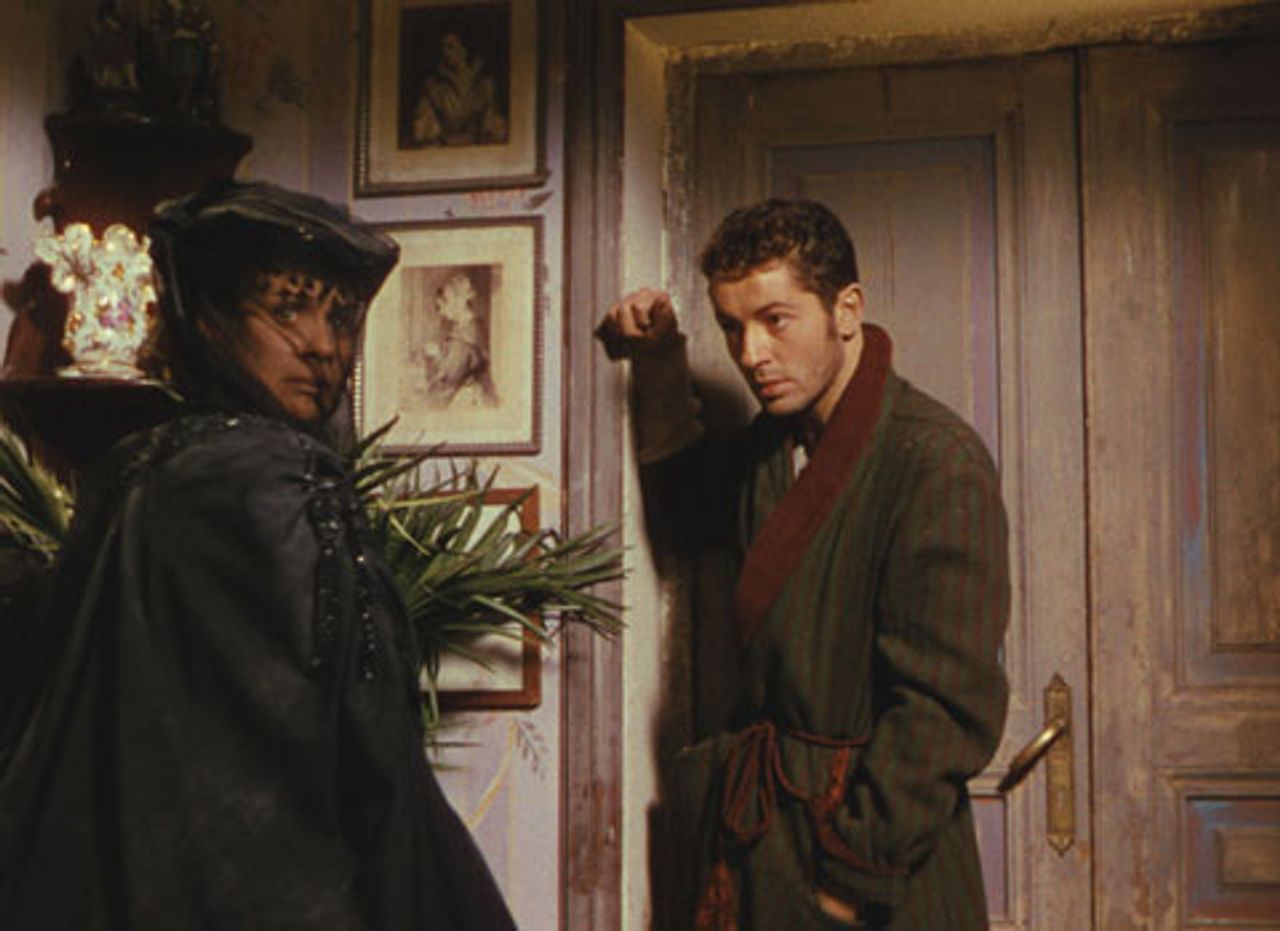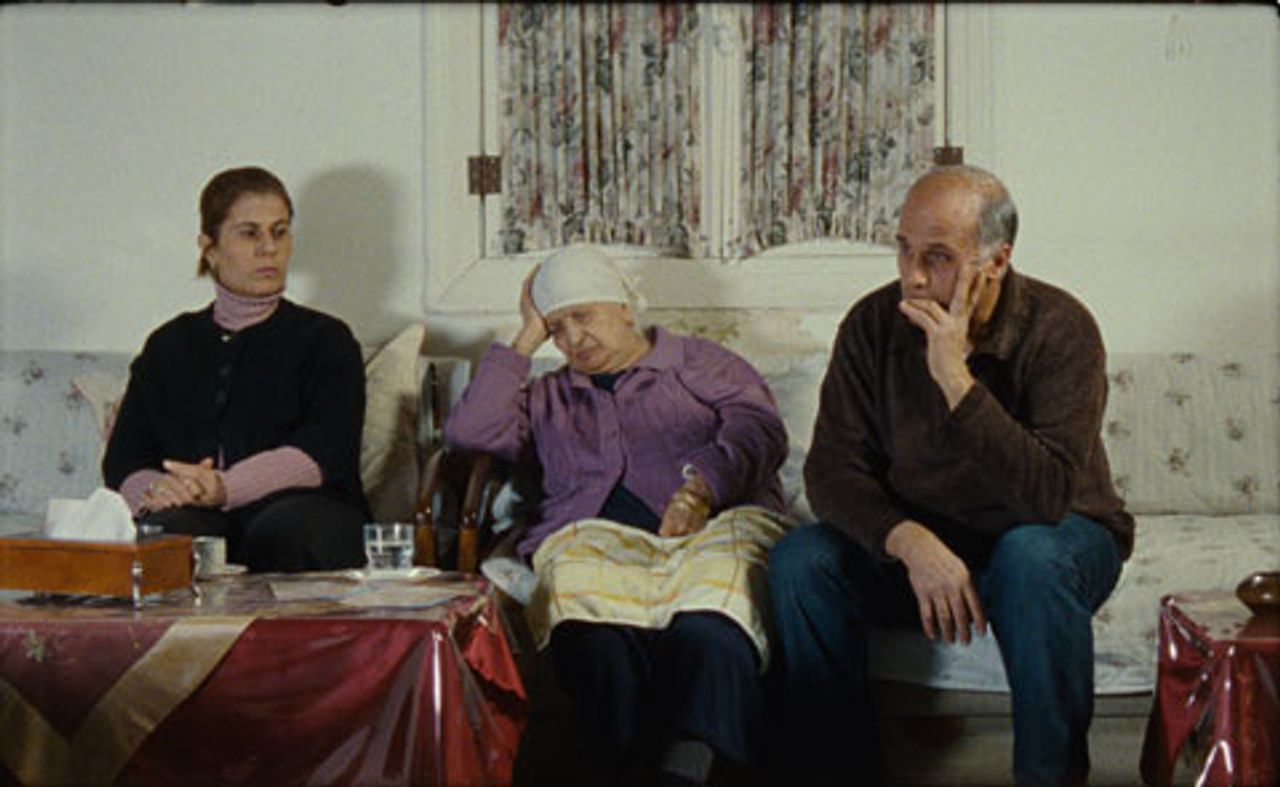This is the first of a series of articles on the 2010 San Francisco International Film Festival, held April 22-May 6.
The recently concluded San Francisco International Film Festival was one of the more valuable in the last number of years. The festival screened some 177 films (including shorts) originating from several dozen countries, in addition to—according to its catalog—“Outer Space” and “Virtual Reality.” Who would dare argue?
 Senso
SensoAwards were handed out to Brazilian director Walter Salles, American actor Robert Duvall and critic Roger Ebert, among others. A highlight was the presentation of restored versions of Luchino Visconti’s Senso (1954) and Satyajit Ray’s The Music Room (Jalsaghar, 1958). Prizes and cash were bestowed on numerous films and novice filmmakers. More than 80,000 people attended the 2009 festival, one of the oldest in the US.
 The Music Room
The Music RoomHow are film writers, directors and producers responding to the greatest economic crisis since the 1930s, as well as the first signs of popular unrest? Very weakly. References to economic dislocation and various global trends can be found, but the worsening of the conditions facing hundreds of millions hardly comes in for mention. This is unlikely to stun anyone who has been following world moviemaking in recent decades.
To what extent the filmmakers simply lag behind events, to what extent they are overwhelmed, to what extent socially indifferent…it remains difficult to determine. We will see how things unfold.
Artists, despite their reputation, are among the most conservative creatures on the planet, in certain ways. The artist (in part by necessity) tends to take life in its present form as a given, absorbs it deeply, develops all manner of impressions and intuitions on the basis of it, and treats “it as uncritically as he does the solar system” (Trotsky). Only a cataclysm can undermine this “passive conservatism.”
Nonetheless, the honest film writers and directors make efforts to approach life, even if these efforts sometimes seem maddeningly circumscribed today.
“Honest” is perhaps an inadequate word. Certain artists no doubt think themselves honest if they simply transmit the contents of their present thoughts and feelings to the screen. Some very limited, even stupid, people can be “honest,” in that extremely restricted sense. We have something else in mind, which also has to do with “thoroughness” and “depth” and “critical thinking.”
It may be entirely honest to register one’s own self-involvement or self-satisfaction, or to passively register events and processes as they immediately occur, but it is surely insufficient and even regressive in the grander scheme of things.
To what extent is a film writer or director looking scrupulously, probingly, self-critically at reality? What social assumptions are operating in a given film? With what emotional depth and sincerity does an artist approach his or her subject? How well has he or she assimilated the most interesting film work of the past? Does a particular film give a sense that life is complex and demanding? Does it offer a protest, direct or indirect, against the present conditions of life? Is the work itself challenging, or does it offer easy, soothing answers? These are some of the questions we pose in regard to the films we see.
It is no disgrace that Senso and The Music Room were the finest movies presented in San Francisco. (Ted Kotcheff’s fierce Wake in Fright (1971), about the Australian outback, despite its one-sidedness and occasionally hysterical tone, was probably next in line. See “Several movies well worth revisiting” .) The Visconti and Ray films are masterpieces. Nonetheless, the marked drop-off between the best of the past and best of the present is tangible and speaks to some of our current problems.
Where is the intensity, the artistic commitment, the seriousness, the emotional and pictorial texture, in today’s films? Not everyone is a genius, but artists ought to be equipped with observant eyes and sensitive ears. They need to be attuned to what is important to wide layers of the population. They should be concerned about the fate of humanity. How is it possible that so many self-centered and trivial movies continue to win praise? Why are the critics so confused and often simply taking shots in the dark? And a question we have asked before: in what meaningful way is “independent cinema” truly independent?
It’s not easy to make sense of history and social life in a time like ours, when so many retrograde conceptions have been thrown at the artist—above all, the conception that making sense of history and social life itself is a futile—or worse!—undertaking. Genuine artistic boldness, universal thinking, outrage at society—all this has been discouraged. We continue to see the results.
 Woman on Fire Looks for Water
Woman on Fire Looks for WaterIn any event, there are thinking and feeling people at work in the global film world. For example, from Malaysia comes Woman on Fire Looks for Water, directed by Woo Ming-jin, about a father and son in a modest fishing village involved in some terribly painful relationships.
 Susa
SusaWe admired Susa, from Georgian director Rusudan Pirveli, about a young boy who sells vodka made at an illegal distillery where his mother works. The film avoids cheap sentimentality in its look at poverty and illusions, but is moving and precise.
Neither Frontier Blues (Babak Jalali), about life in the northern part of the country, nor The White Meadows (Mohammad Rasoulof, director of Iron Island, 2005), both from Iran, are entirely satisfying, but they have their truthful moments.
 Port of Memory
Port of MemoryPort of Memory, from director Kamal Aljafari, documents the plight and response of a Palestinian family waiting to be evicted by the Israeli authorities from the house they’ve been inhabiting for 40 years in Jaffa. Moscow (from South Korean Whang Cheol-mean) takes a sincere look at the pressures generated by contemporary global society.
Night Catches Us (Tanya Hamilton), which treats the aftermath of political radicalism (in the form of the Black Panthers) and its failures in Philadelphia in the mid-1970s, and The Man Who Will Come (Giorgio Diritti), about an infamous massacre of Italian villagers committed by the German army in the waning days of World War II, are limited, but the respective directors have made an effort to treat some historical complications.
Get Low, a Depression-era story, directed by Aaron Schneider, with Robert Duvall and Bill Murray, doesn’t break a great deal of new ground, but it is engagingly performed. It is something of a Hollywood rarity—a movie whose central “mystery” actually holds one’s attention until the end. Brazilian Walter Salles (Central Station, The Motorcycle Diaries, Linha de Passe) makes a highly favorable impression, and one wishes him well in his attempt to adapt Jack Kerouac’s On the Road, even if an uncritical attitude toward the original work seems somewhat hazardous.
Some of the “exemplary” (or perhaps cautionary) weaker films also need to be discussed.
To be continued
